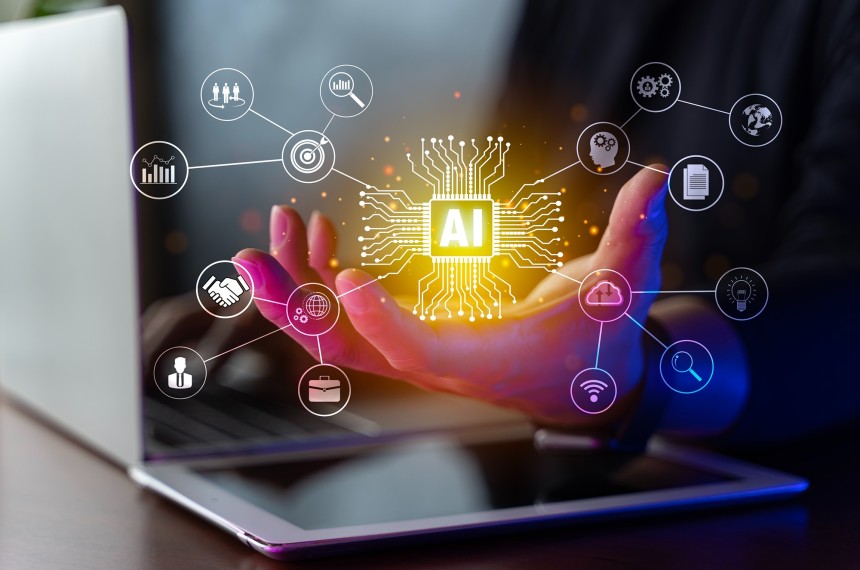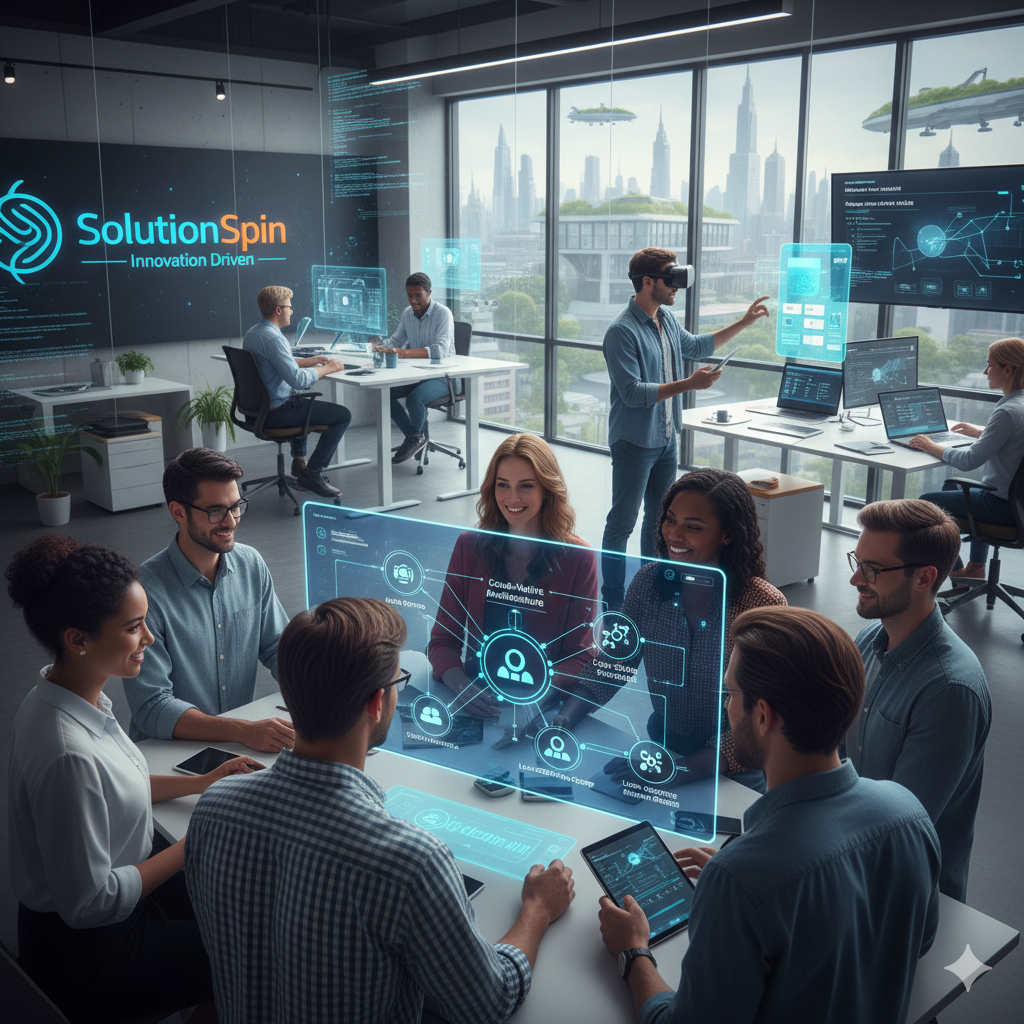The Next Frontier: Unveiling the Latest AI Innovations in 2025
In this edition, we explore the cutting-edge advances in artificial intelligence for 2025 — from multimodal reasoning and real-time adaptive models to AI safety frameworks and enterprise integration strategies.
1. The Rise of Multimodal Intelligence
Traditional AI models often specialize in one data type (text, image, audio). The latest generation of AI is breaking through those silos — multimodal systems can now integrate and reason across multiple modalities (e.g. understanding images and text jointly, audio cues plus visual context). This unlocking of cross-modal understanding allows richer, more contextual experiences (e.g. image + narration + sentiment).
2. Real-Time Adaptive Learning & Self-Updating Models
One of the standout features in the new AI wave is continual learning — models that can adapt on the fly without full retraining. This means AI systems deployed in production can adjust to shifting distributions, user behavior changes, or unexpected events, reducing model drift and improving resilience.
3. Compact & Efficient Models with Big Power
While ever-larger models have stolen headlines, there’s a parallel trend: creating smaller, efficient models that rival their bigger counterparts. Techniques such as knowledge distillation, pruning, quantization, and sparse architectures enable powerful AI on edge devices, reducing latency, energy use, and dependency on heavy infrastructure.
4. Trust, Safety & Robustness as First-Class Citizens
With greater AI capabilities comes increased responsibility. New frameworks now embed safety, fairness, interpretability, and adversarial robustness as essential components, not afterthoughts. Model auditing, “hallucination detection,” bias mitigation, and certifiable robustness techniques are becoming standard in AI pipelines.
5. AI + Human Augmentation: Collaboration, Not Replacement
Rather than full automation, many organizations are embracing augmented intelligence — combining human judgment with AI assistive power. In decision-making, content creation, design, and analytics, we see hybrid workflows where AI suggests, humans guide. This ensures accountability, creativity, and domain knowledge remain central.
6. Enterprise-Grade AI: Customization, APIs & Modular AI Stacks
Enterprises are increasingly demanding AI solutions that are customizable and modular. Instead of off-the-shelf black boxes, AI is being exposed through APIs and microservices. Companies build internal AI stacks or "brains" that plug into diverse systems (CRM, supply chain, analytics). This modularization accelerates innovation and integration.
7. Edge & Federated AI for Privacy & Scalability
To manage privacy, latency, and bandwidth constraints, more AI logic is moving to the edge. Federated learning (training across distributed devices without centralizing user data) is gaining traction. This allows AI-driven functionality (e.g. recommendations, anomaly detection) while respecting data sovereignty and privacy.
8. Generative AI Beyond Text & Images
Generative models are expanding: now synthesizing audio, video, 3D models, code, and simulations. More importantly, these models are becoming self-reflective — capable of internal fact-checking, uncertainty estimation, and multi-step reasoning. They become co-creators, not just pattern mimics.
9. AI-Driven Design, Simulation & Virtual Worlds
Design optimization, digital twins, virtual worlds, and simulation environments are being powered by AI to test, predict, and optimize real-world systems — from factories to urban planning. This “metaverse of systems” enables safer, faster iteration and insight before physical deployment.
10. The Road Ahead & Strategic Considerations
Ecosystem Partnerships: Combining domain expertise, data access, and AI capability will fuel breakthroughs.
Skill Shift: Teams must evolve with new roles: prompt engineers, AI ethicists, model ops, hybrid UX designers.
Governance & Regulation: As AI’s influence grows, regulators are catching up. Early compliance strategy is key.
Ethical Compass: Purpose-driven AI — transparency, fairness, inclusive design — will be competitive differentiators.
Traditional AI models often specialize in one data type (text, image, audio). The latest generation of AI is breaking through those silos — multimodal systems can now integrate and reason across multiple modalities (e.g. understanding images and text jointly, audio cues plus visual context). This unlocking of cross-modal understanding allows richer, more contextual experiences (e.g. image + narration + sentiment).
2. Real-Time Adaptive Learning & Self-Updating Models
One of the standout features in the new AI wave is continual learning — models that can adapt on the fly without full retraining. This means AI systems deployed in production can adjust to shifting distributions, user behavior changes, or unexpected events, reducing model drift and improving resilience.
3. Compact & Efficient Models with Big Power
While ever-larger models have stolen headlines, there’s a parallel trend: creating smaller, efficient models that rival their bigger counterparts. Techniques such as knowledge distillation, pruning, quantization, and sparse architectures enable powerful AI on edge devices, reducing latency, energy use, and dependency on heavy infrastructure.
4. Trust, Safety & Robustness as First-Class Citizens
With greater AI capabilities comes increased responsibility. New frameworks now embed safety, fairness, interpretability, and adversarial robustness as essential components, not afterthoughts. Model auditing, “hallucination detection,” bias mitigation, and certifiable robustness techniques are becoming standard in AI pipelines.
5. AI + Human Augmentation: Collaboration, Not Replacement
Rather than full automation, many organizations are embracing augmented intelligence — combining human judgment with AI assistive power. In decision-making, content creation, design, and analytics, we see hybrid workflows where AI suggests, humans guide. This ensures accountability, creativity, and domain knowledge remain central.
6. Enterprise-Grade AI: Customization, APIs & Modular AI Stacks
Enterprises are increasingly demanding AI solutions that are customizable and modular. Instead of off-the-shelf black boxes, AI is being exposed through APIs and microservices. Companies build internal AI stacks or "brains" that plug into diverse systems (CRM, supply chain, analytics). This modularization accelerates innovation and integration.
7. Edge & Federated AI for Privacy & Scalability
To manage privacy, latency, and bandwidth constraints, more AI logic is moving to the edge. Federated learning (training across distributed devices without centralizing user data) is gaining traction. This allows AI-driven functionality (e.g. recommendations, anomaly detection) while respecting data sovereignty and privacy.
8. Generative AI Beyond Text & Images
Generative models are expanding: now synthesizing audio, video, 3D models, code, and simulations. More importantly, these models are becoming self-reflective — capable of internal fact-checking, uncertainty estimation, and multi-step reasoning. They become co-creators, not just pattern mimics.
9. AI-Driven Design, Simulation & Virtual Worlds
Design optimization, digital twins, virtual worlds, and simulation environments are being powered by AI to test, predict, and optimize real-world systems — from factories to urban planning. This “metaverse of systems” enables safer, faster iteration and insight before physical deployment.
10. The Road Ahead & Strategic Considerations
Ecosystem Partnerships: Combining domain expertise, data access, and AI capability will fuel breakthroughs.
Skill Shift: Teams must evolve with new roles: prompt engineers, AI ethicists, model ops, hybrid UX designers.
Governance & Regulation: As AI’s influence grows, regulators are catching up. Early compliance strategy is key.
Ethical Compass: Purpose-driven AI — transparency, fairness, inclusive design — will be competitive differentiators.






